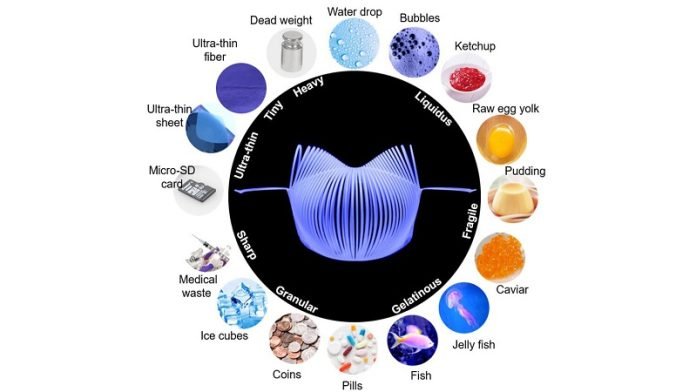
Scientists at North Carolina State University have invented an incredibly versatile robotic hand that’s a master at both strength and precision.
It’s so gentle that it can pick up a water droplet without bursting it, yet so powerful that it can carry a weight of about 14 pounds.
Imagine a hand that can handle the delicate task of folding a piece of cloth or pick up items as thin as 20 times a human hair!
The robotic hand has also shown potential for use in prosthetics, potentially benefiting amputees in the future.
The challenge in creating such a device was to balance strength, precision, and gentleness. The scientists used a Japanese art technique called kirigami to craft it.
Kirigami involves cutting and folding flat materials into 3D shapes.
The design is unique because it cleverly distributes the force used to grab or hold objects, allowing it to handle both lightweight and heavy items delicately.
The team made a stunning breakthrough in robotic technology with this kirigami-inspired hand. Despite weighing less than half a gram, it can carry up to 14 pounds, breaking previous records in the payload-to-weight ratio by more than double!
With its combination of strength, precision, and gentleness, this robotic hand opens up a world of applications.
Another interesting fact about this robotic hand is that it doesn’t rely on special materials for its fantastic features.
It’s the structure or design that makes it stand out. So, it’s possible to make it out of bio-degradable materials like tough plant leaves. This can be handy in situations where we only need to use the hand for a short while, like handling food or medical waste.
The scientists also combined this robotic hand with a special prosthetic that is controlled by muscle activity. It was found to be helpful in performing tasks that existing prosthetics struggle with, like zipping up certain zippers or picking up a coin. It’s not designed to replace current prosthetics entirely but can supplement their functions without needing additional motors.
In their tests, the team successfully used the kirigami robot hand with the muscle-controlled prosthetic to turn book pages and pluck grapes off a vine. The researchers believe this robotic hand can be used in a variety of areas, including food processing, pharmaceutical, and electronics manufacturing.
They’re now excited to collaborate with industry partners to bring this technology to life.
In short, the North Carolina State University researchers have made a significant leap in the field of robotics by creating a versatile hand that balances strength, precision, and gentleness.
This robotic hand not only promises to revolutionize prosthetics but also opens up exciting possibilities in a variety of industries.
Follow us on Twitter for more articles about this topic.
Source: North Carolina State University.



